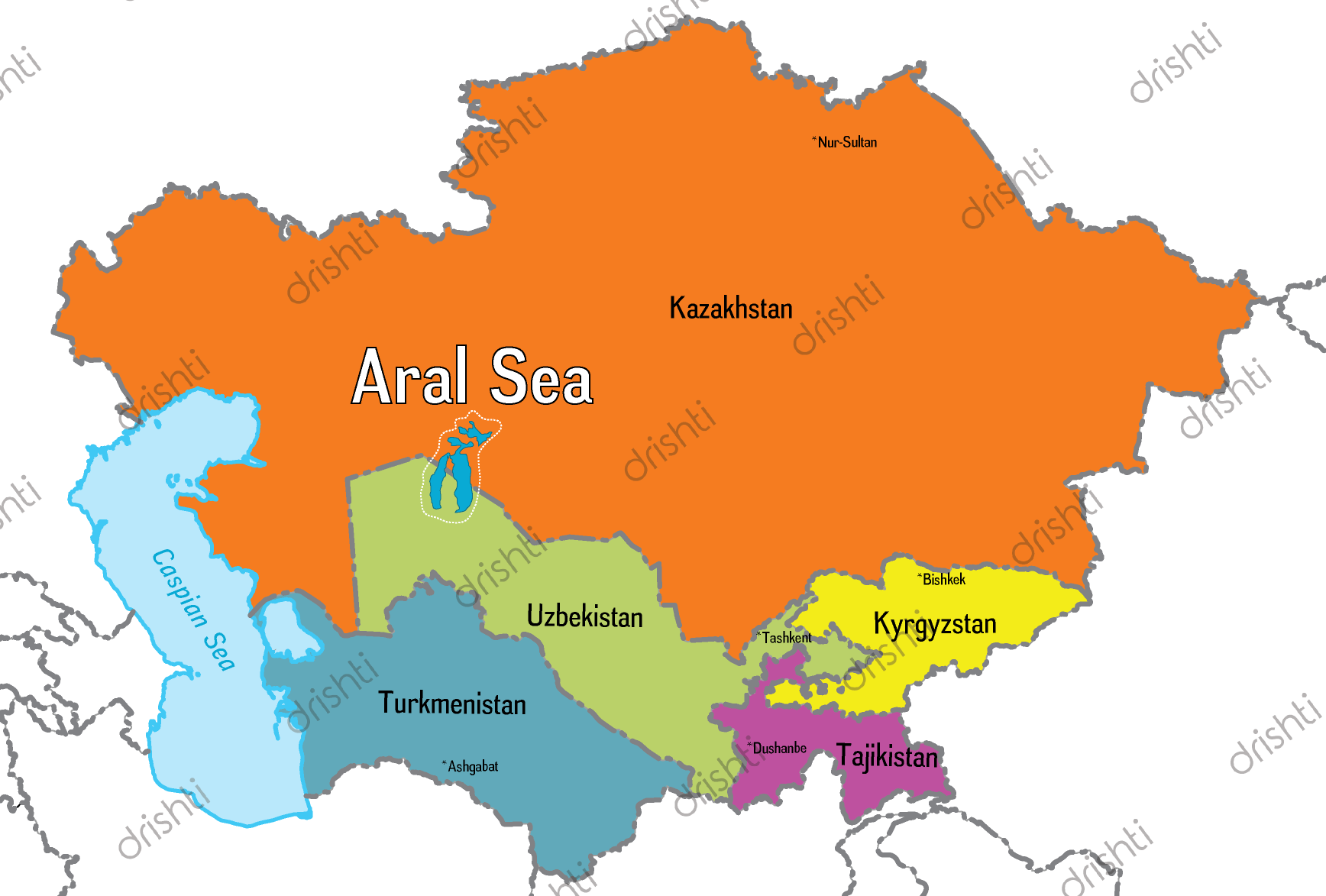Place In News
Dry Aral Sea
- 08 May 2024
- 1 min read
A recent study reveals that the drying up of the Aral Sea has resulted in the emergence of the Aralkum Desert, making Central Asia dustier by 7%.
- The Aral Sea, once the world's fourth-largest lake, dried up in Soviet Central Asia in the 1960s, leading to severe environmental consequences like increasing dust and consequently affecting air quality and could change the overall weather patterns, and increase the air pressure on the ground in the Aral region.
- It can intensify the Siberian high in winter and a weakening of the Central Asian warm low in summer.
- The dust can accelerate the melting of glaciers, exacerbating the water crisis in the region.
- The Aral Sea was fed by the two great rivers of Central Asia — the Amu Darya (from the Pamir Mountains) and the Syr Darya (Tien Shan mountain ranges).
- Other similar examples:
- Lake Urmia in Iran and Lake Hamoun on the Iran-Afghanistan border have also dramatically shrunk and become strong local sources of dust.
Read more: Aral Sea





